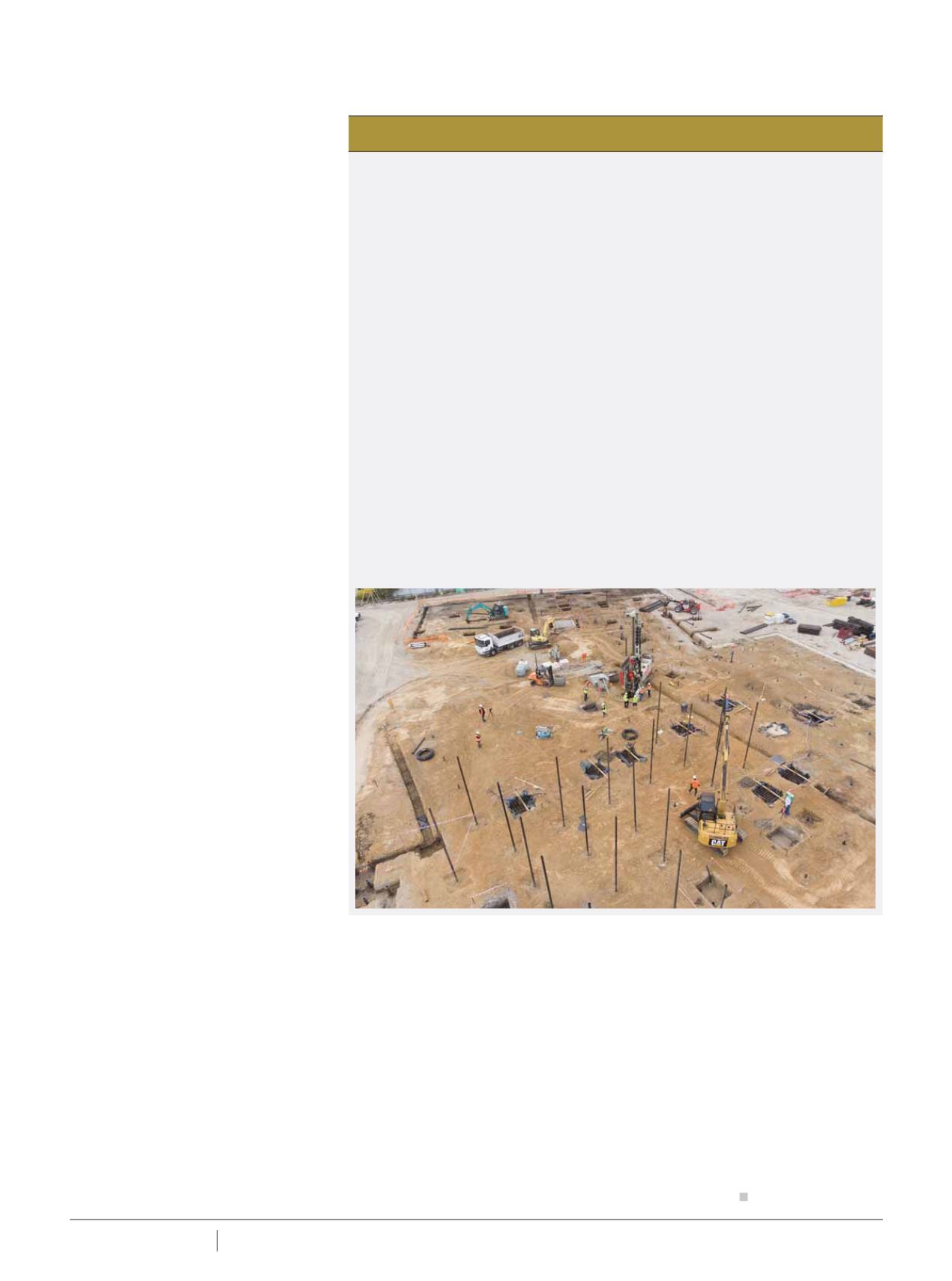

2 4
BUILDING CONNECTION Spring 2019
HOWDOES GEOTHERMAL WORK?
The absorption of solar radiation/energy
(47% of the sun’s energy that reaches the
earth) by the ground is the renewable energy
source of geoexchange systems. In most
localities across the globe, depths of greater
than 2-3m provide a stable temperature
environment that is the approximate
equivalent of average annual air temperature
for that location.
One is only required to enter an
underground cave or wine cellar to experience
this temperature stability first hand. These
stable temperatures are typically present in
the top 100m or more of the ground. The rare
exceptions to the rule are unique geological
regions such as those present in Rotorua, New
Zealand and elsewhere that geothermal heat
is present at shallow temperatures.
For example, the ground temperature
in Perth, Adelaide, Melbourne, Sydney and
Canberra is approximately 16-18˚C while in
Brisbane it is 22-23C. In contrast, Darwin has
a ground temperature of approximately 31C
and Hobart approximately 14˚C.
In essence, geoexchange systems use
this solar energy stored within the earth for
heating buildings in winter (earth as a heat
source) and as heat rejection in summer
(earth as a heat sink). Both internationally
and in Australia, the technology has been
applied at the residential, commercial and
district scales.
Heating
During the heating cycle, a geoexchange
system uses the earth loop to extract heat
from the ground. As the system pulls heat
from the loop it distributes it through a
conventional duct system as warm air (water
to air). The same heat energy can also be used
for a radiant floor system, swimming pools
and spas (water to water).
Cooling
In the cooling mode, a geoexchange system
air conditions your home by reversing the
heating process. Instead of extracting heat
from the ground, it is extracted from your home
and either moved back into the earth loop, or
used to preheat the water in your hot water
tank. Once the heat is removed from the air by
being passed through the loop, it is distributed
through the duct system in your home.
*This information has been provided by
GeoExchange Australia.
SMART BUILDING
“PICAC has done a number of
renovations over the years at its
Brunswick site as they’ve grown and
each significant renovation or project
there has had some sort of sustainable
element incorporated. The Narre
Warren site is by far their largest
Greenfield project though, which is why
they’ve had the opportunity to push
for the technology to achieve such an
energy efficient structure,” says FMSA
architect James Kazalac.
“It’s the first time we’ve worked on
a net zero building and as part of this
project we received a federal grant to
assist in installing the geothermal and
part of that thinking is to make the
system more available to the market
and a more common practice across the
country.
A net-zero carbon building is highly
energy efficient and powered from on-
site or off-site renewable power. This
particular building will generate enough
energy to support its own requirements.
Such a feat has been achieved via a
combination of the geothermal system,
solar technology, an airtight building,
roof design and a 375-kW photovoltaic
(PV) system.
“It’s the first time it’s been done in the
Southern Hemisphere. We’ve taken a lot
of American ideas and added multiple
layers to them,” says Hutchinson
Builders site manager Nick Hollier.
That’s not to say it’s been an easy
road though.
“One of the hardest aspects of the
build was the fact the Geoexchange
geothermal system was integrated into
the structural. That hasn’t been done
here before. Having thermals going
into the ground is normal. It’s more the
fact that of 580 piles, 190 of them have
waterlines in them, 28 of which descend
one hundred metres into the ground.
“We already had the base down,
ready for slabs, because none of us had
coordinated this type of project before.
There is 7km of waterlines horizontal
and 7km vertical. The concreter had to
come back through and work around
the complex piping network, tidy it all
up and set his slab up. You can probably
imagine what kind of nightmare that
is. It was a massive challenge. It took
us six months to get out of the ground.
It would normally take two months at
worst.”
As they say though, nothing worth
having comes easy, and Hutchinson
Builders and its consultants took a
boutique geothermal system and
expanded it to a fully integrated building
system, with the outcomes being a net-
zero energy building.
Nick explains that while the upfront
investment was high, through research,
discussions and experience from the
plumbing industry in the Northern
Hemisphere a 5-7 year payback is
anticipated.
When you consider this incredible
achievement coupled with the training,
testing and collaborative works on the
horizon, it’s fair to say the industry as a
whole has a lot to look forward to.
The official opening of PICAC Narre
Warren will take place on 10 September,
a day before World Plumbing
Conference begins, with visiting
international guests set to take part in
the proceedings.
















